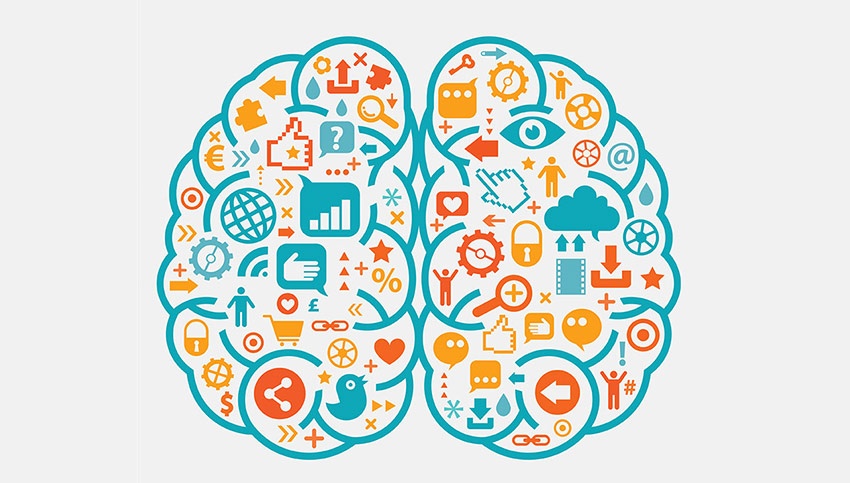What is Neuromarketing?
Neuromarketing has been defined as a discipline that analyzes the processes of the brain by relying on neuroscience, in order to know the motivations of people and what drives them when they are making decisions, and take advantage of that information to promote the purchase of a product.
Well, we have been telling you in several articles for some time how important it is to know customers in order to focus our communication on them.
Well, this post is based on that.
To enter the minds of people and discover their neural processes and how they make decisions, there are several techniques.
One of the useful techniques is eye-tracking which tracks where the user’s eye is fixed when they are viewing something, for instance, a web page.
In this way, some improvement can be applied later on that web page in the areas where users are most focused. Or implement CTAs in those places.
There are also other techniques such as measuring heart rate, measuring galvanic responses (skin responses), or analyzing the expressions on our faces.
Benefits of incorporating neuromarketing into the digital strategy
When it comes to making an online purchase, we are not as rational as we think.
We act rather unconsciously as our brain has automated mechanisms that work on its own. Normally, these actions are defined by past experience, they come from memory.
Decisions that users make unconsciously beat out decisions that are made rationally and thoughtfully.
Therefore, it will be important to use the knowledge of neuromarketing in your digital marketing strategies appealing to the emotional part.
So, thanks to the knowledge of neuromarketing and its techniques, we will be able to:
● Discover new perspectives in market research
● Analyze more accurately, since with neuromarketing techniques we will know more precisely how the user thinks
● Identify patterns of behavior of potential customers
● Improve customer experience
● Based on this, we can act on the emotional experience, the client’s unconscious, and his memory
Tips for applying neuromarketing in digital strategy
Our brain has some little “mistakes” when it responds to something, we can call them that, but they are actually cognitive biases.
We can take advantage of these biases, and apply them to improve your digital marketing strategy to appeal to irrational consumer buying.
Decoy Effect
It consists in that there will be three options to choose from (a product, or a service plan, etc.) and one of the 3 is the one that will be more prepared so that you do not choose it.
Let’s see, recap, if one of the 3 options you see is worse, has worse features, or is much more expensive, it will make the other two more attractive to the user.
Drag Effect
This means that people usually do what other people do, it influences us a lot.
A clear example, ahem, is that of confinement: that everyone buys toilet paper, well me too, it’s not going to run out.
For this, the testimonials ingrained in your online business work very well, so that Users can see what “the rest of the people” think.
And another example is the tik to challenge, a person starts a challenge, and everyone starts doing it too. We could apply it, if our buyer persona allows us, versioned tik to challenges in relation to our online business.
Activates mirror neurons
Those neurons are those of empathy.
What we mean by this is that if advertising, whether online or offline, represents the user and feels identified, it will cause more impact on him.
Exposure Effect

If there is one thing that we see repeatedly, that we are used to seeing very often, we usually prefer it to something else that we do not.
Therefore, what we will do is use repetition, and that in digital marketing is called retargeting.
If you tell me that it has never happened to you, I do not believe it: to be looking for something online, something that interests you or you are willing to buy. Remind yourself, “Okay, next time.” But while browsing various social networking sites and for leisure, do not stop getting advertising for whatever you have been searching for.
Right, what happened to you? Well, that is retargeting, and since you are already familiarizing yourself because they are repeating it, you will end up developing a preference for that option and not for your competition.
Authority effect
It consists of the people that users think have more authority in that sector or field, generating more trust and credibility.
A clear example of offline marketing is the typical toothpaste ad in which a doctor in a white coat appears and says “scientifically proven”.
In the world of digital marketing, we could focus on influencers, online users who trust them, and especially niche influencers because they consider them a person of authority in that sector.
Appeal to the social identity of the users
People usually feel part of a collective, perhaps you feel part of the collective “entrepreneurs”.
If our product is perfectly associated with one of these groups, it will make people who feel part of it want to buy it.
Fear of losing bias
This is related to the FOMO effect, the effect of being afraid of missing something, such as the opportunity for a discount or an event.
This is used very well by booking, it is always indicating that that room, and at that price, is being looked at by another person and also there is only 1 left.
That causes the potential customer to want to buy or reserve it already for fear of running out.
We have told you a few ways to apply neuromarketing to sell more in our digital strategy. But there are many more.
Ready To Apply Neuromarketing
Well, that’s it, we have told you what neuromarketing is all about and how it will help improve your marketing strategy, Like other digital marketing specialists.
At the same time, we have given you some tips so that your clients increase those impulsive sales.


